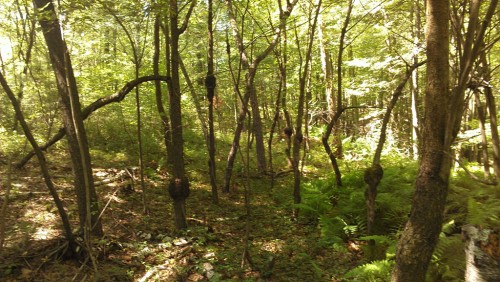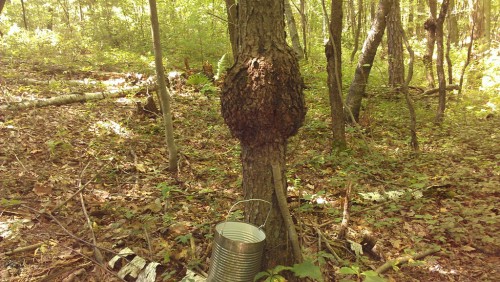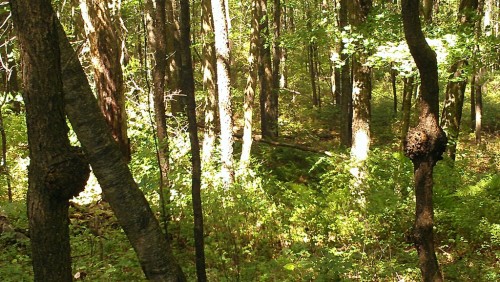While out looking for wild blueberries, I came across a wooded grove containing a number of trees with unusual growths on them. I’ve seen such growths before but never this many in such a tight cluster. I felt like I was walking into an alien forest…
As best I can tell, these growths are burls rather than galls. Both can be caused by bacteria, fungi, insects, environmental stress, or genetic predisposition but burls tend to be sounder and more solid than galls. Think of crazy-grained solid wood (wavy, curly, or bird’s-eye-like) covered with bark. On certain types of trees, such as spruces, burls resemble knobby protrusions. Almost as if the tree has arthritis. A gall – which is often caused by insects such as wasps laying their eggs inside the wood – contains funky-grained wood along with bark, bark rot, twig knots, insect channels, and other stuff.
I think the trees in the burl grove I stumbled across are black cherry although I’m not 100% sure. I shall pay a visit in the future to verify. I also plan to keep an eye on things to see how the burls develop and if the trees remain healthy. It’s quite possible that these trees were all injured by something specific to this local environment – a bug perhaps – so I won’t be too surprised if more trees become infected.
They tell me that highly figured burl wood is prized by wood turners for bowls, vases, etc. Perhaps this is my opportunity to try my hand at burl turning?





I just cut down a cherry tree and saved the gall which is about 18 inches in diameter. I,m saving it until I figure out how to cut it open and preserve the beauty inside. Any suggestions would be appreciated.